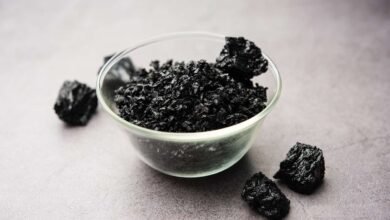Health in Every Sip

Introduction to Nutritional Supplementation
In recent years, health consciousness has taken a front seat in people’s lives. With increasing workloads and fast-paced lifestyles, many individuals seek easy ways to maintain a healthy diet and stay energized. Nutritional supplements have grown in popularity, especially among fitness enthusiasts and working professionals. Among these, one product has consistently stood out in terms of convenience, efficiency, and results—protein shakes.
Understanding the Role of Protein
Protein plays a crucial role in the human body. It is a macronutrient essential for building and repairing tissues, creating enzymes and hormones, and supporting immune function. Most dietary sources of protein come from meat, fish, dairy, legumes, and nuts. However, not everyone gets enough through daily meals, especially those protein shakes who follow specific diet plans or have intense physical activity routines. This is where supplemental options step in to fill the gap.
What Are Protein Shakes?
These are beverages that typically contain a concentrated dose of protein along with other nutrients such as carbohydrates, fats, vitamins, and minerals. They are available in different forms, including ready-to-drink bottles, powders to be mixed with water or milk, and plant-based alternatives. The main protein sources used include whey, casein, soy, pea, and rice proteins. Each of these sources offers distinct benefits suited for different dietary needs and lifestyles.
Why People Choose Protein Shakes
One of the most appealing features is their convenience. In today’s busy world, preparing a protein-rich meal three times a day is not always feasible. A quick shake can be prepared in minutes and consumed on the go. Moreover, they help meet daily protein requirements without the excess calories and fats that often accompany full meals.
Another reason is the role these beverages play in muscle development and recovery. Fitness professionals and athletes use them before or after workouts to support muscle growth and repair. The body absorbs liquid nutrients faster than solids, making shakes an ideal post-exercise recovery option.
Different Types of Protein Sources
When selecting a shake, it’s important to understand the type of protein it contains. Here’s a breakdown of the most common sources:
- Whey Protein: Derived from milk, it’s quickly absorbed and rich in essential amino acids.
- Casein Protein: Also milk-based, but digests slowly, ideal for overnight recovery.
- Soy Protein: A plant-based complete protein, suitable for vegetarians and vegans.
- Pea and Rice Protein: Often combined to create a complete amino acid profile for plant-based users.
Each option caters to specific dietary needs, and people with allergies or dietary restrictions can select accordingly.
When to Consume Protein Shakes
There’s a lot of discussion around timing. While many believe that the best time is immediately after exercise, others consume them in the morning, between meals, or before bed. The ideal time depends on personal goals. For muscle gain, post-workout consumption is beneficial. For weight loss or satiety, having a shake as a meal replacement or mid-day snack works best.
Benefits Beyond Fitness
While most people associate these products with bodybuilders and gym-goers, the benefits extend far beyond. Busy professionals, seniors with low appetite, or people recovering from surgery may all benefit. They offer an easy way to increase protein intake without extensive meal planning or cooking.
Additionally, some options are fortified with probiotics, fiber, and superfoods, enhancing digestive health and boosting immunity. There are also low-sugar or zero-carb options for diabetics or those on keto diets.
Considerations Before Buying
Before incorporating them into your daily diet, it’s important to consider the quality and content. Not all products are created equal. Many commercially available options are loaded with added sugars, artificial flavors, or synthetic ingredients. Reading labels is crucial. Consumers should look for products that contain natural ingredients, no more than 5 grams of sugar per serving, and ideally, a protein content of 20 grams or more.
It’s also a good practice to choose products that are third-party tested for quality assurance. Those with food allergies or sensitivities must pay extra attention to allergens listed on the label.
See also: Understanding Sports Injuries: Prevention, Recovery, and Long-Term Health
DIY Protein Shakes at Home
While store-bought options are convenient, making them at home offers full control over ingredients. Simple ingredients like Greek yogurt, banana, oats, peanut butter, and a scoop of your preferred protein powder can be blended together to create a nutritious drink. Not only does this cut down on preservatives and artificial sweeteners, but it also allows for variety in flavors and textures.
Home blends are often more cost-effective and customizable for taste and dietary preferences. Adding ingredients like chia seeds, flaxseeds, berries, or spinach can boost nutritional content.
Potential Side Effects
Despite their benefits, overconsumption can lead to unwanted effects. Excessive protein intake may strain the kidneys, especially in individuals with pre-existing health conditions. Other side effects may include digestive issues like bloating or constipation, especially if the product contains lactose or fiber the body is not accustomed to.
It is essential to strike a balance and not replace whole meals with supplements unless recommended by a nutritionist or medical professional. Whole foods provide a wider range of nutrients and fiber that processed products may lack.
Final Thoughts
protein shakes have become a valuable addition to modern diets. They offer an easy, fast, and effective way to meet nutritional needs without compromising on health or taste. Whether your goal is to build muscle, lose weight, or simply maintain good health, they provide a flexible and functional solution. However, like all things, moderation and smart choices are key to gaining the full benefits.
If you’d like this article in a downloadable Word or PDF format for publishing, I can also prepare that. Let me know if you want to generate a version with correct font style/size embedded.




